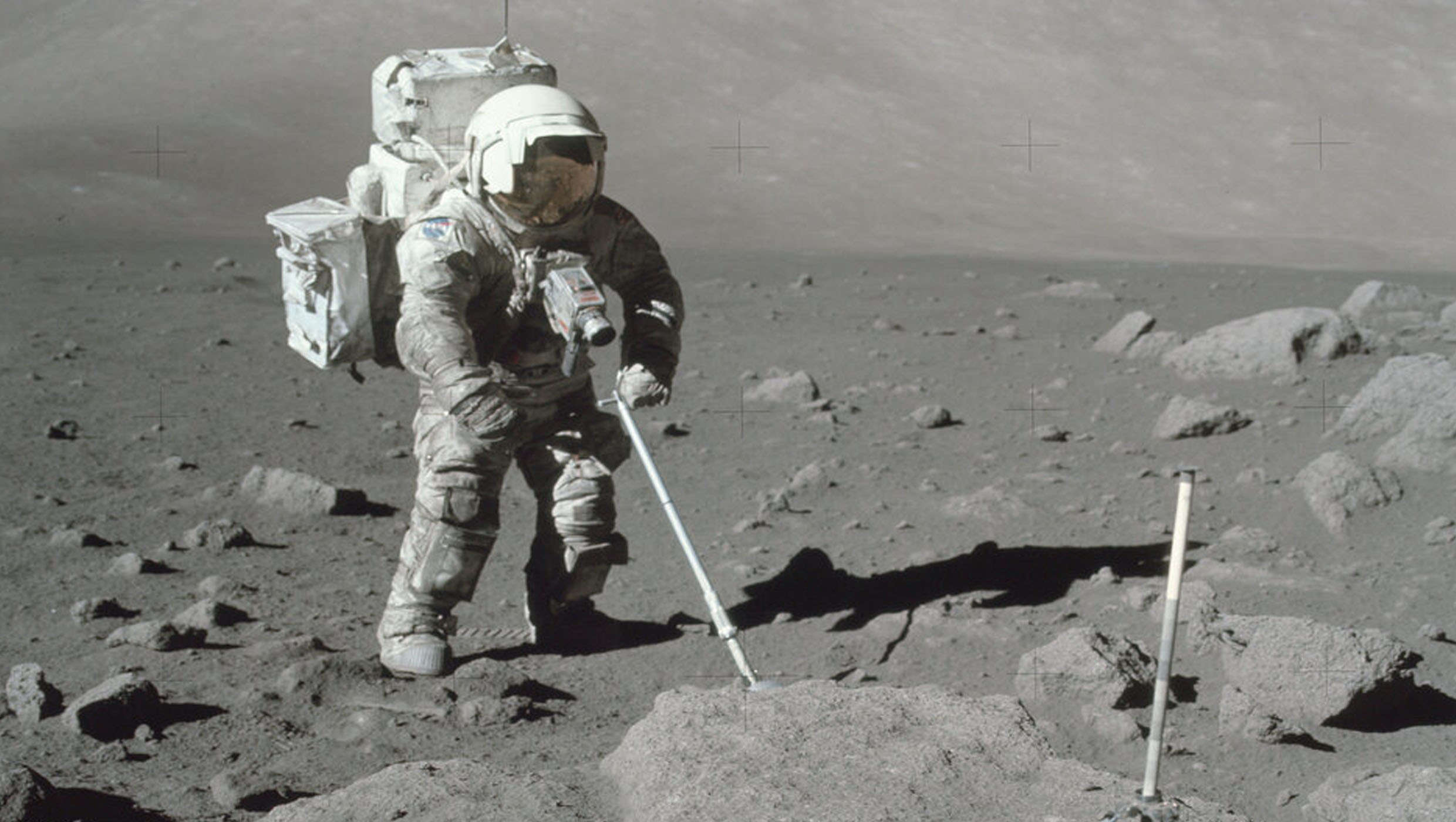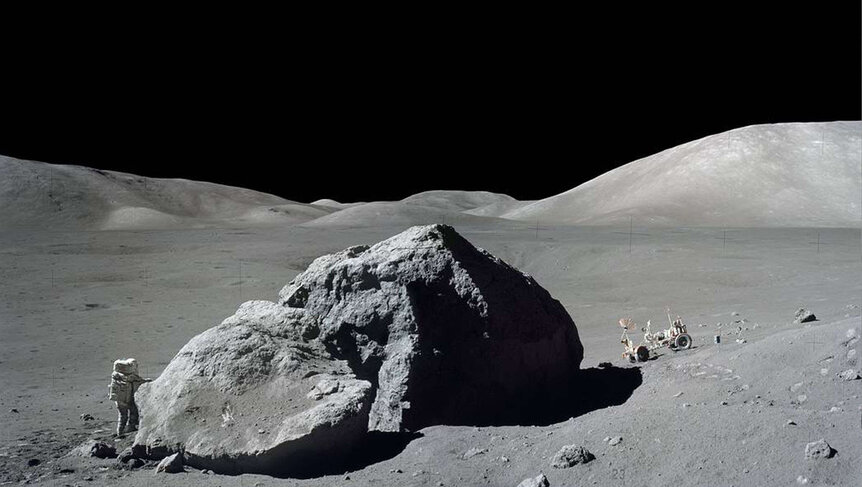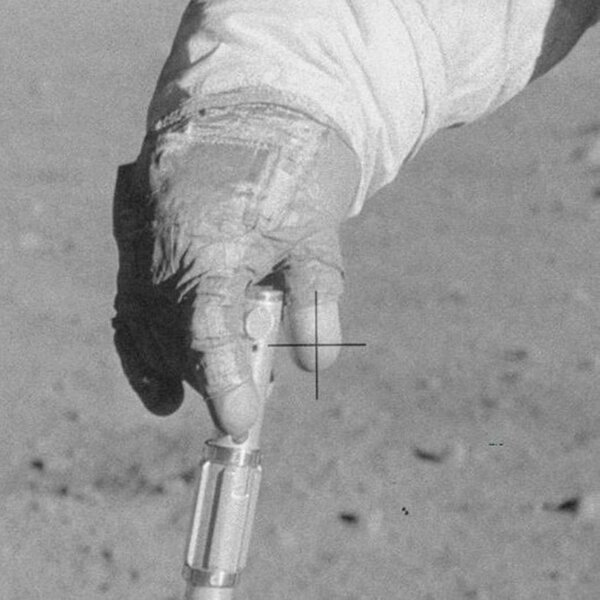Create a free profile to get unlimited access to exclusive videos, sweepstakes, and more!
Moon dust looks mystical, but its razor-sharp particles call for new protective gear

Moon dust looks all sorts of sparkly and magical, until you realize it could scratch your eyes out — and that isn’t even the worst that could happen. In the name of the Moon, don’t breathe that stuff in.
Behind the sparkle that inspired a thousand fairy tales and Usagi’s origins in Sailor Moon are coarse pieces of minerals, plus razor-sharp glass shards that were formed by either ancient volcanoes or melt from the extreme heat generated by collisions. It can erode space suits and wear away at other equipment. Any human who ingests the dust could suffer a hemorrhage and even a permanent change in their DNA. This is why ESA is now looking for the materials most effective at keeping it out.
“At the moment we are looking into the external layers of spacesuits which need to be resistant to abrasive impact of regolith,” ESA materials and processes engineer Malgorzata Hołyńska told SYFY WIRE. "The highest abrasion risk is expected in shoes and gloves. However, dust mitigation by these layers is also critical if we consider storage of the suit in the inhabited zone, as inhalation of the dust might lead to silicosis. Another important spot would be the visor part to avoid obscuration of the view."
The one thing lunar dust does have in common with glitter is that it gets on absolutely everything and is a pain to get off. NASA dreads it just as much as ESA. Not long after touching down on the Moon, Apollo 17 astronauts had to deal with it wearing away at their space suits, clogging suit mechanisms, and obscuring their view by sticking to and scratching their visors. When astronauts Harrison Schmitt and Gene Carman returned from exploring near the Sea of Serenity (accidental Sailor Moon reference there) in 1972, they noticed their module smelled like gunpowder.
Neither astronaut thought there was anything ominous about Schmitt feeling congested soon after that moonwalk. His symptoms faded, but having smelled the Moon — even inside the Challenger module — meant its dust had become airborne and made its way into his lungs.
That means anything that an astronaut would be wearing, from visors to gloves to breathing devices, needs to be tough. Case in point: around the boots where the parts sticking out made the most contact with lunar dust, it wore right through the outer layer of Apollo spacesuits and had started to get to the Mylar layer underneath. Even if astronauts do not breathe it in, the absence of a magnetic field and constant bombardment with cosmic rays means that it could give them electric shock. Rovers and any other equipment outside of a spacesuit will also need protection, whether it comes from the material they are made of or from specially designed covers.
“For other equipment, such protection would be needed, e.g. in solar arrays, general shielding of electronics and mechanisms. An important aspect is also protection of lunar habitats,” Hołyńska said.
Moon dust is so abrasive because, unlike Earth, our satellite has no wind or flowing water to weather the sharp edges of the particles. No atmosphere means that solar rays can give it static cling, but Hołyńska and her team are looking into a solution for that.
“What is relevant for the external layers of astronaut suits for lunar EVA is that they do not promote build-up of electrostatic charges, so they are screened with respect to their electrostatic discharge properties,” she said.
Micrometeorites smash into the Moon all the time, breaking into micro-particles that scatter all over. Those on their own could be lethal enough without the glass from volcanic activity and asteroid encounters that happened billions of years ago, and glass continues to form. Even tiny pieces of space rock that smash into a particle of lunar dust can hit with enough force to melt it into glass. Over here, if you kick up dust and breathe it in, you’ll cough it out. Over there, doing the same could make you cough up blood.
Making dust-proof spacesuits is going to require more than just one material. Boots and the parts of the suit closest to the ground will need to be the most resistant of all because they will be constantly slogging through lunar regolith. ESA believes that future suits will need to be layered with different materials whose functions combine to ward off dust. Materials in external layers need to be physically resistant to lunar dust. That, and astronauts will also need extra protection from the intense radiation that constantly bombs the moon since there is no atmosphere.
“We are now focusing more on materials resistant to abrasion by lunar dust, rather than the ones repelling lunar dust,” said Hołyńska. “This abrasion turned out to be critical in the past lunar exploration and the past EVA suit designs could not tackle this sufficiently to enable long-term missions. However, coatings that have such ability are also under scrutiny.”
Current tests being carried out include an abrasion test that involves throwing the material in question with lunar dust simulant EAC-1A into a tumbler and seeing how well the material survives. Other tests apply a high-pressure fluid to a material to see if the fluid seeps through, and the thermal cycling test in development will simulate temperature extremes on the Moon to see how a material can hold up against them. Hołyńska is looking into every option possible.
“We are considering abrasive resistance, dust mitigation, discharge protection, thermal insulation, radiation protection, micrometeoroid impact protection, pressure retention,” she said. “Moreover, such a suit should incorporate embedded material health monitoring sensors. Our research points out that the ultimate suit could include some already known materials such as polyimide foils, along with newly developed strong fabrics with a metallized layer that have not been used for space applications so far.”
So perhaps we’d better stay on Earth until we are absolutely sure that astronauts will be safe from the lunar forces of evil.




























